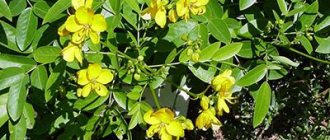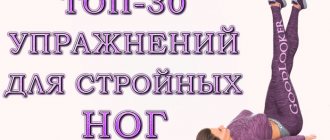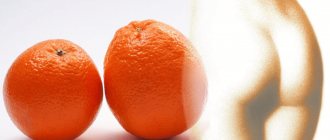Beef fat, the benefits and harms of which will be discussed today in this article, is rendered fat that is obtained from cattle, which includes cows. This type of animal fat is produced only from fresh cow carcasses that have not been frozen. Not so long ago, beef fat could be freely purchased in packs, like margarine, or by weight. Now this product can only be found on the market.
Whatever one may say, the human body still cannot do without fats of animal origin. That is why, if it is strictly forbidden to consume pork fat (the main indications for this are heart problems), rendered beef fat can confidently replace it.
In the modern food industry, it is customary to produce beef fat from fresh internal raw lard of slaughtered cattle.
It is produced for sale either in small briquettes packed in parchment paper or in glass jars.
In total, several types of similar fat are produced:
1) Extra - high quality (in order to produce it, the manufacturer first receives the so-called first juice as a result of the initial rendering and only then separates fusible particles from it; thus, such beef fat has a melting point of no higher than 32 degrees, is light in consistency, it is pleasant smell and taste, in its natural form and when heated, almost transparent);
2) Higher (the process of its preparation is not much different from the production of the extra variety, but has:
- Light yellow or completely yellow color;
- Solid consistency even when kept at room temperature;
- When melted it becomes transparent;
- In terms of taste, it is not characterized by the presence of foreign odors and taste);
3) First grade (it is rendered from fresh internal raw lard; its structure is similar to premium fat; the only difference is the taste of fried cracklings);
4) Second grade (despite the fact that the main ingredient is also raw lard, the color of the product has a grayish tint or a frightening light green, although when melted it is still transparent, and the taste remains, like that of first-grade fat - fried crackling).
Types of beef fat
The product offered to the consumer is classified in several varietal categories:
- extra grade. To obtain it, the raw material is heated at a process temperature of at least +32°C. At the specified temperature, the fat becomes transparent and liquid in consistency. High quality beef lard, light milky in color, is used as the base.
- top grade. The solidification temperature is about +19°C, if it rises to +27°C and above, the result is a transparent, liquid fat, light yellow in color with a pleasant taste;
- I grade. In terms of appearance, it is practically no different from a premium product; the taste is reminiscent of fried cracklings. The molten product is characterized by transparency;
- II grade. It is distinguished by a sharp smell of fried cracklings and a pale milky hue; when melted, it becomes cloudy.
What are the benefits of beef fat?
The beneficial substances contained in beef fat provide benefits to the body. Thanks to the use of this product in the human body, the following is noted:
- stimulation of hair growth;
- normalization of metabolic processes;
- improvement of skin condition;
- reducing the risk of developing diseases of dermatological origin;
- increasing the body's resistance to colds;
- activation of the adrenal glands (hormone synthesis);
- protection of nerve fibers of both the brain and spinal cord when animal fats perform insulating functions;
- improvement of the digestive process.
The benefits of beef fat
Due to the presence of such important components in the product, the benefits and range of the main positive effects on the body are determined:
- Increasing the body's resistance to viruses and colds while reducing overall immunity;
- Strengthening the skeletal system and teeth;
- Promoting hair growth;
- Protection of nerve fibers of the spinal cord and brain (here the main function is performed by cholesterol);
- Production of bile acids;
- General improvement in fat absorption;
- Activation of the production of hormones by the adrenal glands, which promote the absorption of phosphorus by the body;
- Improved digestion;
- Strengthening the muscles of the digestive organs;
- Providing a mild laxative effect on the body;
- Prevention of bone tissue destruction processes;
- Direct positive impact on a person with hearing loss, fainting and depressive states;
- Helps the skin stay toned in severe frosts and heat;
- Preventing frostbite.
In small quantities, this type of animal fat can be included in the diet of older people, those who suffer from low hemoglobin, and those who are tired.
In traditional medicine recipes, beef fat often serves as a base for the preparation of various ointments. It is used in the treatment of cough, bronchitis, healing of cracks in the heels and soles of the feet.
Cosmetology has not escaped this fat either. It can be used to moisturize the skin, especially in severe winter frosts, when the skin is also chapped. They make masks with it for hair growth and strengthening.
How to render beef fat at home
The process of preparing melted fat at home is quite simple; for this you need:
- cut the lard into small pieces, removing films, veins of meat, and cartilage;
- place the product in a deep bowl and place on low heat, stirring constantly;
- stop the process when cracklings form that need to be removed;
- strain the resulting mass using gauze or a sieve and pour into jars. Place the cooled product in the refrigerator.
Beef fat in home cosmetology
This is a popular product for cosmetic procedures. It perfectly preserves the lipid layer, especially during severe frosts, and saves a chapped face. Masks based on it also stimulate hair growth and strengthening.
Rejuvenating ointment
To rejuvenate the skin, use the following composition:
- dill, linden blossom, oak bark, taken one tablespoon at a time, pour boiling water and simmer over low heat for up to 20 minutes;
- the broth is filtered. Next, stirring thoroughly, add melted fat.
The cooled ointment is ready for use and should be stored in the refrigerator.
Mask for dry skin
To make your skin smooth, prepare a mask:
- grind cabbage leaves in a blender;
- add the melted component to the resulting mass, beat with a broom or mixer until the consistency of thick sour cream is formed;
- Apply the product for 10 minutes to a previously cleansed face;
- After time, wash off with warm water.
Hair Mask
A mask will help strengthen your hair by adding water (1 cup) to beef fat (100 g) and boiling until the liquid has completely evaporated. The contents are cooled slightly, then filtered. Add alcohol (1 teaspoon) to the broth and mix thoroughly.
After rubbing the scalp with clove oil, massage for about 10-15 minutes. Next, rub the prepared mixture into the scalp for 5 minutes. Wrap a hot towel around your head.
At the end of the procedure, wrap your hair in a dry towel and leave it overnight. Then the hair is lubricated with Provençal oil and rubbed into the scalp, performing a massage. The procedure is completed by combing the hair using a sparse comb.
Wet method
Fat that has already been cooked contains pieces of meat and other solids. In addition, it contains water. This is the white substance that comes to the surface when you put meat in the refrigerator. Skim it off your stew or meat and place the fat in a saucepan with a little water and bring to a simmer over low heat.
READ ALSO: How not to lose face in a fashionable expensive restaurant: 12 most common mistakes
You can also do this with other pieces of fat. You boil chunks of raw fat in water until you get a nice layer of oil on the surface. This is the fat we need.
Now place the pan in the refrigerator overnight. In the morning, separate the white fat chunks from the broth and water below. You can use fresh fat for cooking, making soap or candles.
The remaining broth and water can be used as a soup base if desired.
The use of beef fat in folk medicine
The benefits of internal beef fat in folk medicine have been noted.
Ointment for joint pain
An ointment, the main ingredient of which is a fatty product, is an effective remedy for joint pain. The cooking process consists of the following steps:
- vinegar essence (100 g) is poured into a bowl, an unbroken egg is placed, and left for 2 - 3 days, covered with a lid, until the shell is completely dissolved;
- In a porcelain or glass container, knead the soaked egg, transferred with a wooden spoon. After adding the used vinegar product, mix the mass thoroughly;
- adding 120 - 150 g of fat to the mixture, mix again and use for its intended purpose.
Is beef fat harmful?
When consuming beef fat, both benefits and harm to the body are noted. Harm to the product is noted only if the dose of consumption is significantly exceeded. In this case, it begins to function as a carcinogen, inhibiting internal organs, negatively affecting the functioning of the cardiovascular system and gastrointestinal tract. Regular consumption of large quantities of the product provokes obesity.
If a person has sick kidneys, liver, gall bladder, or increased acidity, he should be completely excluded from the diet. Patients suffering from atherosclerosis are recommended to significantly limit the use of this product.
Calorie content and chemical composition
This is a high-calorie product, the calorie content of which varies slightly among different species and reaches approximately 900 kcal. Proteins and carbohydrates in its composition are present in the form of minor impurities. It also contains the following vitamins and organic compounds in significant quantities (per 100 grams):
- retinol and other substances related to vitamin A - 0.03 mg;
- vitamin K—6.0 mg;
- tocopherol (E) - 1.4 mg;
- beta-carotene - 0.05 mg.
- sodium - 11 mg;
- phosphorus - 8 mg;
- potassium - 6 mg;
- copper - 80 mcg;
- manganese - 1 mcg.
Composition of beef fat
The concept of “fat” often misleads people, and they are afraid of such a food product as fire.
In fact, it must be included in the diet, at least in small quantities and not daily.
After all, rendered beef fat contains:
- ash products;
- unsaturated and saturated fatty acids;
- vitamin D, important for joints and the skeletal system;
- tocopherol (vitamin E);
- fat-soluble vitamin A and beta-carotene synthesized in the human body;
- macroelements in the form of potassium, calcium, magnesium, sodium and phosphorus;
- microelements such as copper, iron, selenium and zinc.
The total calorie content of 100 grams of beef fat varies within 900 kilocalories.
At the same time, the absence of proteins and carbohydrates is fully recorded, and the fat of animal origin itself is generally 99.7 grams.
Benefits and harms
As we have seen, beef fat contains many vitamins and minerals. So is this product useful, and can it be harmful to the body? Let’s look into it further.
Why is it useful?
Due to its composition, this product has the following beneficial properties:
- normalizes metabolism;
- reduces the risk of developing dermatological diseases;
- stimulates hair growth;
- improves skin condition;
- as an insulating substance, it protects the nerve fibers of the brain and spinal cord;
- increases the body's resistance to colds;
- favors the body’s absorption of a number of substances, including phosphorus and calcium;
- activates the synthesis of hormones by the adrenal glands;
- helps to get out of depression;
- improves digestion.
What harm
This product also has some disadvantages and contraindications:
- when consumed regularly in large quantities, it promotes obesity and has a depressing effect on almost the entire body;
- may pose a danger to the body if exposed to prolonged exposure to high temperatures;
- its consumption should be significantly limited in case of atherosclerosis, and also completely excluded from the diet in case of diseases of the liver, kidneys, gallbladder and increased acidity of gastric juice.
Calorie content and composition
Beef fat is high in calories - this is typical for all fats of plant and animal origin. The nutritional value of 100 grams is 900 kcal. The main part, of course, is fat - about 99.6 g. The mass of proteins and carbohydrates is zero. In addition, the composition contains water - about 0.3 g.
Therefore, the energy ratio (BJU) as a percentage is 0: 153: 0.
Characteristics according to GOST:
- color at a temperature of 15-20 degrees - pale or bright yellow, sometimes greenish is allowed;
- smell, taste - without foreign “odor”/crispy;
- consistency - dense/hard;
- mass fraction of moisture - 0.20%;
- acid value - 1.1 mg.
Despite the large amount of fat, the product is filled with vitamins, minerals, amino acids and other elements necessary to maintain human health.
Chemical composition:
- water;
- ash;
- retinol;
- vitamin A;
- potassium;
- chlorine;
- phosphorus;
- beta-carotene;
- sodium;
- copper;
- vitamin E;
- manganese;
- Omega-3;
- Omega-6.
A special place in the resulting beef product is occupied by acids, including saturated, unsaturated, monounsaturated, and polyunsaturated. Particularly useful are:
- linoleic;
- linolenic;
- oleic;
- myrostolic;
- arachidonic;
- lauric
By the way, the most valuable in terms of composition is the “Extra” variety. It undergoes a high degree of purification and is subjected to a low melting point (about 32 degrees). Its consistency is quite light, the color is pale white. As for other varieties - higher, first, second - they have foreign odors and tastes; color - yellowish or greenish. Such characteristics appear as a result of the melting process at high temperatures.
How to render beef fat
The process of rendering beef fat at home is very simple. It consists of the following steps:
- We cut the fat into small pieces, carefully separating films, cartilage and meat veins if they come across.
- Place the prepared pieces in a deep frying pan, cauldron or cauldron, and place this container on low heat. During the heating process, constantly stir its contents.
- When the fat pieces turn into cracklings, stop the rendering process. Remove the cracklings with a slotted spoon.
- We filter the melted mass through a fine sieve or cheesecloth and pour it into glass jars or any other suitable containers. After cooling, place these containers in the refrigerator.
Video: How to melt fat
How to properly heat at home
The product will be suitable for consumption only after the internal fat has been rendered. It's very easy to do this at home - just follow our recommendations.
- Cut the fat into small pieces.
- Separate the films, cartilage, and veins of meat.
- For further actions you will need a frying pan, cauldron or cauldron. Place on medium heat and pour in the chopped pieces. Be sure to stir throughout the entire process.
- Pieces of fat have turned into cracklings - turn off the stove.
- It is better to remove it from a hot pot using a slotted spoon.
- Strain the resulting mass through a sieve/gauze.
- Pour pure fat into glass jars.
- Store in the refrigerator only after it has cooled down.
What to do with him
This product has found quite wide application in such areas as cooking, cosmetology and traditional medicine. Let's look at some examples of how it can be used in these areas.
Use in cooking
Beef fat of extra grade, as well as premium and first grade, is suitable for use in cooking.
The main areas of its application are:
- cooking various deep-fried dishes;
- stewing, baking and frying meat, as well as vegetables;
- use as a dressing for various cereal porridges.
The benefits and harms of rendered beef fat
The composition contains many elements that are required for the normal functioning of the body:
- potassium;
- phosphorus;
- saturated and unsaturated fatty acids;
- sodium;
- beta-carotene;
- vitamins A and E;
- ash.
Beef fat is widely used in cooking. It is used for frying and stewing food, as well as for deep-frying food. Beef tongue also contains 12-13% fat, so dishes made from this part of the animal are tasty, have moderate fat content, and are also healthy. But the fat from beef heart is most often trimmed off before cooking, as it is of little use.
Beef fat and its varieties
First, let's try to understand the concepts. Typically, tallow is a dense, pale white product that is obtained by processing the perirenal fat of a cow. There are two types of fat:
- raw beef fat or lard, it is removed from an unfrozen carcass;
- rendered fat is a ready-to-eat product obtained from the processing of lard.
The color and taste of the product depend on the location of fat deposition and the age of the animal. For example, the fat obtained from internal organs is grayer in color and sometimes has a rather unpleasant odor.
How is beef fat produced?
Depending on the type, the fat goes through several stages of rendering from beef lard. After the first melting, the resulting mass is called the first juice; it is considered a low-quality product. It is melted a second time in order to obtain the extra grade, which melts at high temperatures (about 32 degrees).
For the highest grade, beef fat is made from raw lard, which is removed from the internal organs of the animal.
The solid consistency of the product is light yellow in color, and when melted it is transparent. As for the first grade, it is rendered from the same lard in a similar way, but it is characterized by the taste of cracklings. Second-grade beef fat is rendered from a different type of lard. This mass is characterized by a gray tint, sometimes a pale green color.
When melted, the substance is not transparent enough and has the taste of crispy cracklings.
The quality of the product depends on the place from which the fat was cut (most often it is the peri-renal part, since this is where the largest fat deposits are) and on the age of the animal (the older it is, the less useful components it contains).
Receipt
To obtain a rendered product from lard, the animal carcass is cooled, the fat is cut off, washed, crushed, and only then melted. Moreover, this process is carried out in two steps. The fat that was melted for the first time is called the first juice. The low-melting part is separated from it, the remaining mass is an extra-class variety. It is usually used in cooking for frying. This is a high-quality variety, it has a lower melting point, pleasant smell and taste.
Premium quality fat is prepared from internal (fresh) lard. Its color is usually yellow or light yellow, but becomes transparent when melted. The highest grade has a solid consistency and is characterized by the absence of odor and taste.
By rendering raw lard, the first grade of beef fat is obtained. In color and consistency, it does not differ from the highest grade, but has the taste of crackling.
Second-grade fat is prepared from benign internal fresh lard. Its color is a little grayish, there is a smell and taste of crackling. When melted, it is not completely transparent.
Benefit
Animal fats (within reasonable limits) increase the body's immunity and resistance to viruses, promote hair growth, and strengthen bone tissue and teeth. Animal fats are especially beneficial for children, who receive vitamins D and A from them.
Cholesterol, present in fat, is also beneficial in reasonable quantities for children and adults; it serves as an insulating substance that surrounds the nerves of the brain and spinal cord and produces bile acids, which help digest fats. Cholesterol promotes the production of hormones by the adrenal glands that accelerate the absorption of phosphorus and calcium.
Rendered beef fat improves digestion, has a mild laxative effect, helps heal bone tissue disorders in joints, and promotes metabolic processes in the human body.
Since ancient times, doctors have advised including this product in the diet for fainting, hearing loss, and mental illness.
Beef internal fat is used in the preparation of cosmetics and medicines; it is very often used in folk medicine for the preparation of all kinds of ointments, as well as in the treatment of bronchitis, cough, and for healing cracks in the feet and heels. In cosmetology, it is used in winter to moisturize the skin, and masks are made to strengthen hair.
Despite the benefits of beef fat, there are also contraindications. You should limit the amount of fat you eat if you have atherosclerosis. It is necessary to completely abandon it in case of diseases of the kidneys, liver and gall bladder, with gastritis, with increased acidity of gastric juice.
Uncontrolled consumption of fried foods leads to an increase in cholesterol in the body, which leads to diseases of the cardiovascular system and gastrointestinal diseases.
Since the melting point of fat is higher than the human body temperature, its digestibility becomes difficult, which can harm the stomach and intestines. About 50% of the body's energy is spent on digesting beef. Those remaining fats that are not processed accumulate in the colon, where putrefactive bacteria begin to grow, poisoning our body. In addition, beef treated with antibiotics or drugs with hormones is also dangerous.
Possible harm of beef fat
True, the attitude towards melted beef fat should always remain extremely careful. The fact is that, along with many positive properties, such a food product can actually be prohibited for some categories of the population and, instead of being beneficial, cause harm. These include those that:
- They suffer from atherosclerosis (although here it is only allowed to adhere to minimal dosages);
- Have problems with the functioning of the liver and gallbladder;
- They have gastritis with increased secretion of gastric juice.
We must not forget about the high cholesterol content in fat. Although cholesterol is needed by the human body. Therefore, the principle should apply here: do no harm.
The high calorie content of the product can also play a cruel joke and harm your health and figure.
And one more warning - you cannot store beef fat outside the refrigerator and at room temperature. After all, no matter how well the heat treatment is carried out, it is impossible to ignore the rules for storing products of animal origin.
And yet, despite the small disadvantages of this animal fat, we can say with confidence that beef fat is healthy and can bring much more benefit than harm. Therefore, it can be used in cooking.
Beef fat is the most common fatty acid product used in cooking. A high-quality, valuable product is obtained from the fatty tissue of fresh meat carcass that has not been subjected to long-term freezing. In addition, the healing qualities of the melted component are useful in the field of medicine and cosmetology.
Application
Extra-class fat is used in cooking for preparing meat dishes or for deep-frying foods. Dishes cooked with beef fat are healthy. Many people use it to grease baking trays when baking.
This type of animal fat is not suitable for dietary nutrition and for people who want to lose weight, since the product is very high in calories.
Beef fat is successfully used in folk medicine and cosmetology. For example, in hair care. Many women prepare a mask that strengthens and nourishes the hair roots. The recipe for such a mask is very simple: you need about 200 grams of fat and a small amount of water, over low heat you need to completely evaporate the water, and strain the remaining mass and rub it into the hair roots, wrap your head. The mask should be washed off with warm water and shampoo.
It should be remembered that any product can harm your body. Therefore, you should be very careful and careful when planning your diet. It is advisable to seek advice from a nutritionist so that the food is not only tasty, but also healthy.









